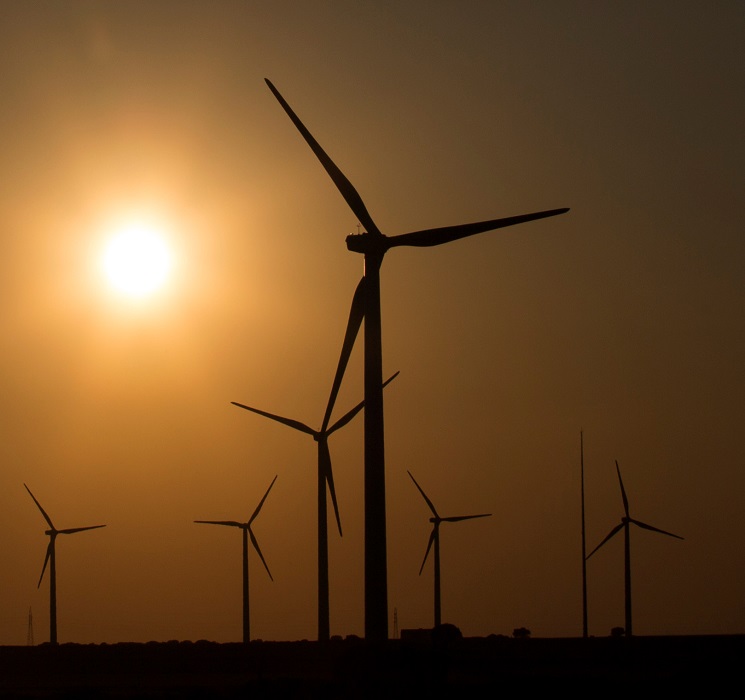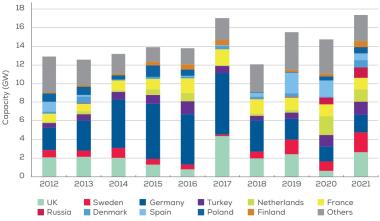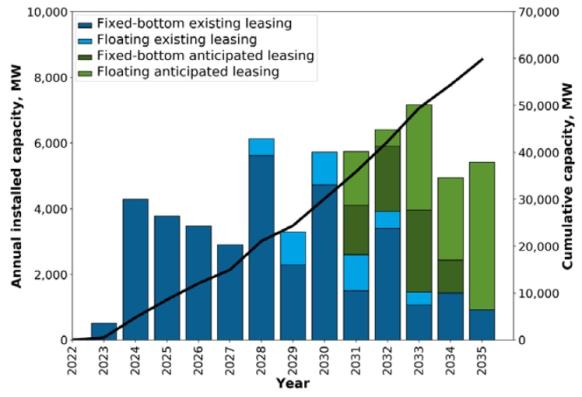Spain hikes wind, solar targets; Maine Governor blocks offshore wind bill
The wind power news you need to know.

Related Articles
Spain hikes wind, solar targets in draft climate strategy
Spain has raised its wind and solar targets in an ambitious plan to generate 81% of the country's electricity from renewables by 2030.
The draft climate strategy published on June 28 sets a wind power target of 62 GW by the end of the decade, up from the previous 50 GW target. Installed wind capacity is currently around 30 GW.
Annual wind installations in Europe by country
(Click image to enlarge)
Source: WindEurope
The strategy doubles the solar target from 39 GW to 76 GW and sets a slightly higher storage target of 22 GW.
Spain has the highest solar yields in Europe, good land availability and is Europe's most attractive market for corporate renewable energy power purchase agreements (PPAs). The government is planning to launch its first offshore wind tenders and aims to install 3 GW of floating wind by 2030.
Spain will also seek to install 11 GW of electrolyzers to produce green hydrogen, up from a previous target of 4 GW. It also plans to double the target for biogas production to 20 terawatt hours (TWh).
The new goals will allow the country to cut greenhouse gas emissions by 32% from 1990 levels, up from an earlier target of 23%.
Spain estimates that it will need investments of 294 billion euros ($322 billion) to hit these targets.
Maine Governor vetoes offshore wind bill to support workers
Maine Governor Janet Mills has vetoed a bill designed to streamline the permitting process for the offshore wind industry, saying that the legislation would have put local non-unionized workers at a disadvantage.
The bill was first proposed by Mills’ office to accelerate the construction of an offshore wind port but it was later amended by legislators to require Project Labor Agreements (PLA), which are essentially pre-hire collective bargaining agreements. This requirement would apply to the manufacturing of turbines as well as port construction, the Democratic governor wrote in her veto message. According to Mills, 90% of construction workers in Maine are not unionized, therefore their employers would not be able to sign PLAs.
The PLA requirement “could stifle competition, which could cut out thousands of workers and employee-owned businesses, and could end up favoring out-of-state unions in the region, over Maine-based companies and workers,” Mills wrote.
Mills stressed that she is a strong supporter of offshore wind energy and said her team is discussing potential revisions to the bill “that may be mutually acceptable to all parties.”
Forecast U.S. offshore wind installations
(Click image to enlarge)
Source: Department of Energy report on U.S. offshore wind supply chain, June 2022
The Gulf of Maine hosts 156 GW of potential offshore wind capacity but most of this is floating wind as the waters are too deep for fixed-bottom technology.
The state of Maine plans to procure up to 2.8 GW of offshore wind capacity over a number of years and the federal Bureau of Ocean Energy Management (BOEM) plans to hold the first commercial lease sale in Maine in 2024.
Aqua Ventus, a partnership between Mitsubishi subsidiary Diamond Offshore Wind and German energy group RWE, plans to start construction of the country’s first floating offshore wind project in a research area off the coast of Maine next year.
New Jersey approves tax benefits for Orsted offshore wind project
New Jersey’s state legislature has approved a bill allowing Orsted to keep tax credits from its 1.1 GW Ocean Wind 1 project.
Under the legislation, the world's largest offshore wind developer will be able to benefit from the tax incentives included in the 2022 Inflation Reduction Act despite the fact that Ocean Wind 1 was approved by New Jersey authorities before the act was passed.
The bill, which only applies to Ocean Wind 1, requires Orsted to deposit a $200 million guarantee to “support the investment in qualified wind energy facilities” and prepare reports detailing environmental impacts and financial viability, as well as an analysis showing that the project will be completed in time.
Due online in 2024, Ocean Wind 1 will be located off of Atlantic City and is supported by energy group Public Service Enterprise Group (PSEG). Non-utility subsidiaries of PSEG will provide energy management services and may lease land to the project. PSEG also has an option to become an equity investor in the project, Orsted said.
In June, Orsted said that Ocean Wind 1 is on track to begin onshore construction in the fall of this year and offshore construction in 2024.
US Great Lakes offshore wind potential is mostly floating
The Great Lakes of the United States hold vast potential for offshore wind but this is mostly for floating wind due to deep waters and logistics and siting challenges, the National Renewable Energy Laboratory (NREL) said in a new report.
NREL estimates floating wind potential in the icy northern areas of the Great Lakes at around 415 GW, compared with 160 GW for conventional fixed-bottom technology.
Water depths in many of the lakes exceed 60 metres, requiring floating wind technologies that will start to be deployed on commercial scale projects in U.S. and European seas in the coming years.
In addition, the narrow channels connecting the Great Lakes to the ocean restrict the access for the large vessels typically used to transport large foundation components on fixed-bottom projects. Floating wind components can be transported through canals and assembled at future lake ports, the report noted.
Floating turbines would also be installed in deeper waters far from the shore, which would reduce the impact on wildlife, minimize potential opposition from locals and be less at risk of freshwater ice formations during harsh winters.
“We don’t think developing floating wind turbines in icy climates will be a massive hurdle, but it hasn’t been done before, so there is a significant amount of uncertainty,” Walter Musial, NREL’s top offshore wind researcher, noted.
The study found “no insurmountable barriers” for offshore wind in the Great Lakes but said more research into transmission constraints, port needs, and wildlife impacts would be needed to ensure that the first projects could be built before 2035.
Reuters Events


